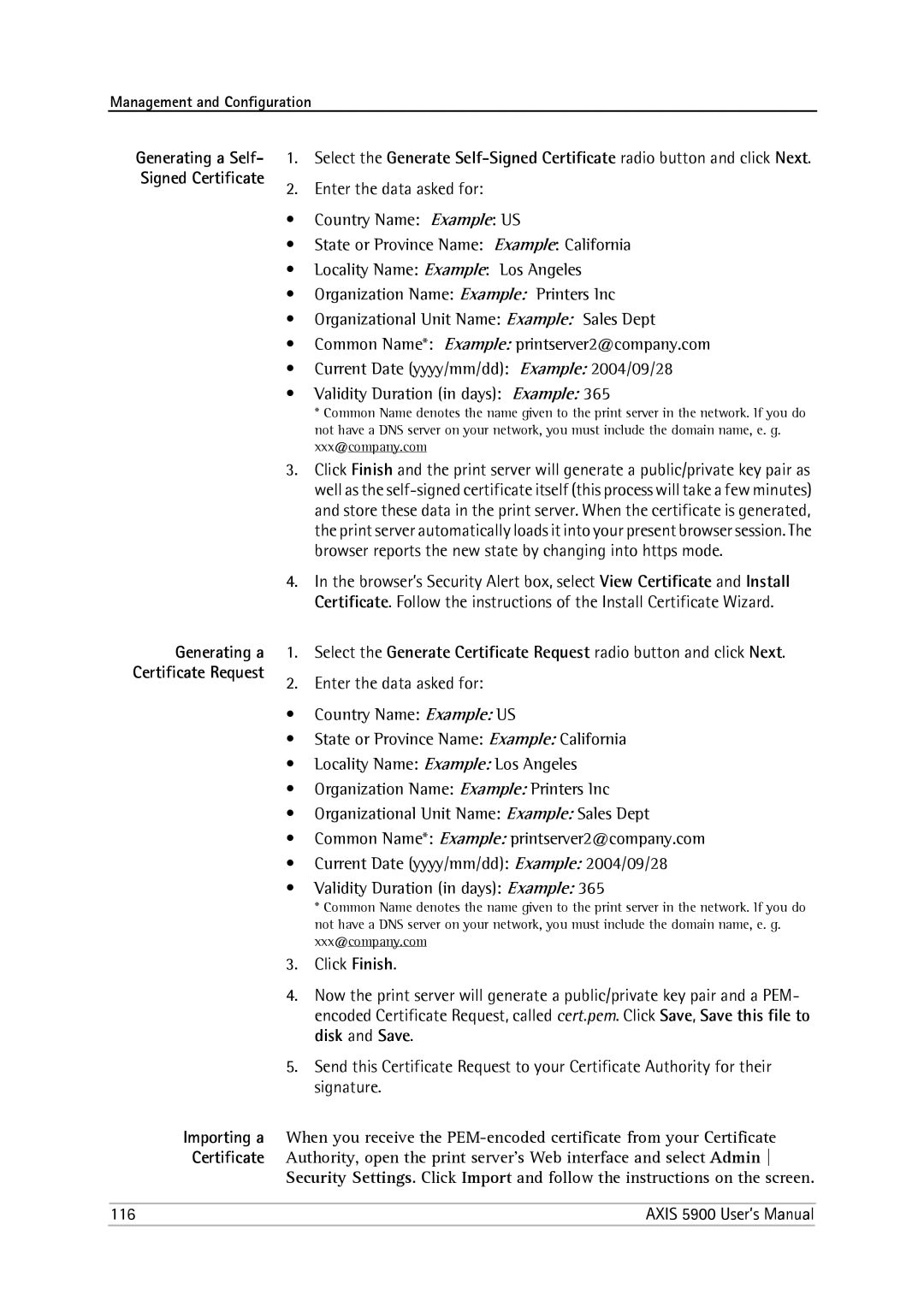
Management and Configuration
Generating a Self- Signed Certificate
Generating a Certificate Request
1.Select the Generate
2.Enter the data asked for:
•Country Name: Example: US
•State or Province Name: Example: California
•Locality Name: Example: Los Angeles
•Organization Name: Example: Printers Inc
•Organizational Unit Name: Example: Sales Dept
•Common Name*: Example: printserver2@company.com
•Current Date (yyyy/mm/dd): Example: 2004/09/28
•Validity Duration (in days): Example: 365
*Common Name denotes the name given to the print server in the network. If you do not have a DNS server on your network, you must include the domain name, e. g. xxx@company.com
3.Click Finish and the print server will generate a public/private key pair as well as the
4.In the browser’s Security Alert box, select View Certificate and Install Certificate. Follow the instructions of the Install Certificate Wizard.
1.Select the Generate Certificate Request radio button and click Next.
2.Enter the data asked for:
•Country Name: Example: US
•State or Province Name: Example: California
•Locality Name: Example: Los Angeles
•Organization Name: Example: Printers Inc
•Organizational Unit Name: Example: Sales Dept
•Common Name*: Example: printserver2@company.com
•Current Date (yyyy/mm/dd): Example: 2004/09/28
•Validity Duration (in days): Example: 365
*Common Name denotes the name given to the print server in the network. If you do not have a DNS server on your network, you must include the domain name, e. g. xxx@company.com
3.Click Finish.
4.Now the print server will generate a public/private key pair and a PEM- encoded Certificate Request, called cert.pem. Click Save, Save this file to disk and Save.
5.Send this Certificate Request to your Certificate Authority for their signature.
Importing a When you receive the
Security Settings. Click Import and follow the instructions on the screen.
116 | AXIS 5900 User’s Manual |
